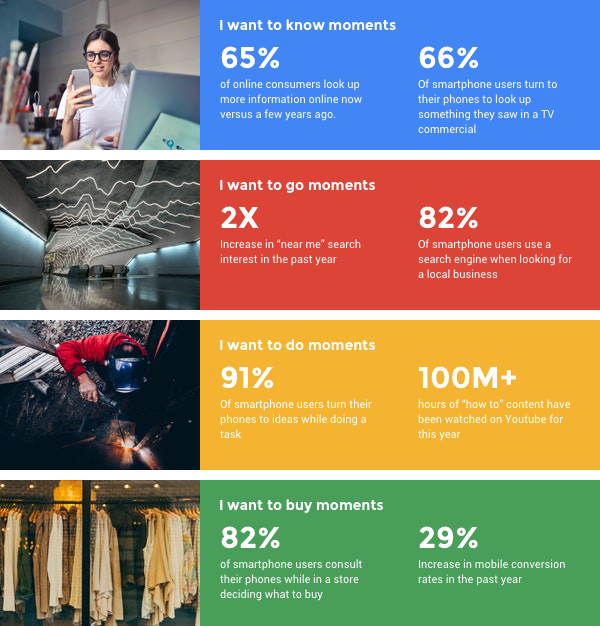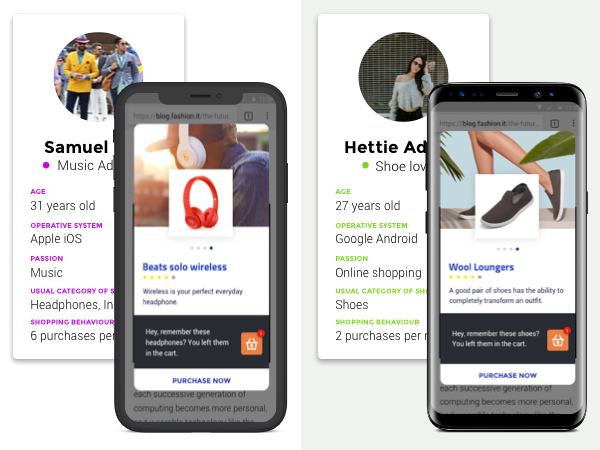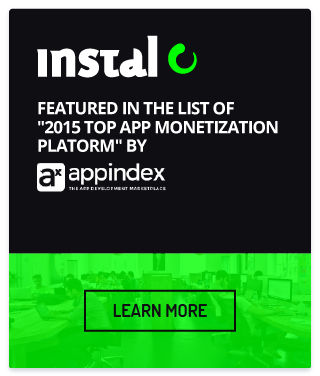Beyond downloads – Why re-engagement really matters and how to win back your users
Today, users spend between 4 and 5 hours per day on mobile on average. More than 85% of this time is spent in-app while 14% on the mobile web. Stats also underline that 36 apps are installed on average on a user’s mobile device but only 4 out of them are used daily. This means that 1 in 4 apps are never used and that 23% of users abandon an app after the initial install.
Installs are very important, but they do not necessarily reflect the success of an app strategy. Each user has different behaviors and needs, that result in a specific way to engage with an app. A well-executed user acquisition campaign is no longer enough to build a successful app business. Savvy marketers are aware of the need to find a way to keep users coming back over and over again, understanding their needs, wants and usage habits. Re-engaging and retaining users can indeed be the key to success.Retention dramatically impacts on profits and success of app businesses: 80% of a company’s future revenues will come from just 20% of its existing customers. There is a 70% likelihood that users who don’t come back within seven days will turn into lost users: any dollar spent on them is likely to go waste.
Retention doesn’t mean conversion, though. Usually, it takes up to 5 interactions with a brand before a user becomes a first-time customer. So, re-engagement can be a great way to boost retention and drive the customer through the conversion funnel, increasing his LTV. Re-engaging users is not that easy actually. Marketers tend to consider re-engagement and re-targeting as the alternatives while they are, instead, two sides of the same coin: retention. Let’s backtrack a little bit. The first step in mastering re-engagement is to understand that there are specific moments for advertising: each moment requires precise marketing techniques to create value for customers.
Being able to understand and identifying these moments, delivering moment-specific campaigns is the ultimate key to success. So, acquiring users is not enough anymore. Marketers need to deliver both user acquisition and retention actions to increase the LTV of their users, turning them into loyal customers.
Retention, Re-targeting and Re-engagement
When it comes to retention, re-targeting and re-engagement, average marketers tend to get constantly confused. How do they work? Are they the same? How can I choose?
Just take a breath, it is easier than it sounds. Re-targeting and re-engagement are two faces of the same coin, that is the ability of a company or product to retain users over some well-defined period.
Retargeting is a performance-based sales tactic, focusing on finding active users, and driving them down the conversion funnel within the app, usually by a purchase, order, registration etc. Re-engagement means finding dormant users and bringing them back into the app: usually it implies high-impacting, dynamic creativities to increase user engagement and involvement.
How you can win back your users
There are several techniques to re-engage inactive users, but pay attention: the most effective re-engagement campaigns are designed to win inactive users back and convert them into active ones. Re-engagement is not a cure-all technique though. Marketers needs to keep in mind that an effective re-engagement campaign need to be carried out when they see the early signals of decreasing engagement, rather than once users have uninstalled their apps.
Main re-engagement techniques comprise re-targeting, incentives and rewards, push notifications, email and deep linking:
- Re-targeting: ads are served to specific users who have previously visited or interacted with the app, but who haven’t yet completed a particular action (i.e. purchase).
- Incentives and rewards: drive conversions sending out specific incentives or/and rewards specific for mobile (coupons, promotional offers, conversions).
- Push notifications: notifications on a user’s screen to notify them about new offers, events, or messages when the user has not actively engaged with the app for a set period.
- Email: messages allowing precise targeting and better engagement and designed to bring back inactive subscribers.
- Deep linking: an effective way to link specific pages within the app, taking users to a particular profile page.
Why re-engagement really matters
As already pointed out, 80% of a company’s future revenues will come from just 20% of its existing customers. These stats underline how much is essential to re-engage customers and unlock their value to define a successful business.
Here are some few stats to better understand the value of a well-implemented re-engagement activity:
- Customers must see a message seven times, on average, before feeling comfortable to make a purchase.
- 92% of re-engagement campaigns perform better than search campaigns
- 91% of re-engagement campaigns perform better than email campaigns
- 92% of re-engagement campaigns perform better than display campaigns
- Re-engagement campaigns help to increase the in-app conversion rate up to +2X
- Re-engagement campaigns help to improve the ROAS up to +12X
Re-engagement campaigns represent the most effective tool to keep mobile marketers’ app businesses alive; they can increase the in-app conversions, LTV and ROI by keeping users engaged to an app and reducing user acquisition costs.
The importance of creativities
The first thought popping in marketers’ mind while setting up re-engagement campaigns is always the same: how. “How can I win users back? How can I drive the restart of their app usage? How can I convince them to take the desired action?
The key is creativities. Creativities are essential to determine the success of re-engagement campaigns: innovative ads can increase user engagement, and their likelihood to perform a desired action, up to 80%. Customizing the advertising message depending on users’ preferences and past behaviors allows delivering only relevant content, increasing the likelihood to convert. Including some interactions inside the ad is also essential to increase conversion rates; they can improve engagement and persuade users to take actions, making them more receptive to marketers’ brands.
How to measure the success of a re-engagement campaign?
When it comes to measuring the success of a re-engagement campaign, three main metrics must be considered:
- Life Time Value
- CPO — Cost per order
- ROAS — Return on ad spend
LTV allows to identify and measure the value of each new customers. It is an estimate of the average revenue each customer will generate through their lifespan. Being able to increase customers LTV means being able to increase business value as well, contributing to its success.
CPO allows to monitor how much a specific user has spent since his return into the app: how many products did they buy? What was the total cart value?
Once marketers are able to identify these elements, they can divide users into high and low-value users so as to understand where to focus their money and efforts.
Finally, ROAS allows tracking how much marketers have spent on re-engagement campaigns and their margin as well. How much are marketers spending versus how much profit? Once again, measuring these values allows marketers to focus their money on what is going to ensure the success of their business.
Wrapping it up
Keeping users engaged with an app is one of the most challenging things ever. In today’s markets, where competitiveness increases every second, being able to engage with and retain users represent the ultimate keystone to success.
Re-engaging users requires a lot of efforts and activity, but, first of all, it requires an in-depth analysis of users preferences and behaviors to be able to deliver them the right content at the right moment and in the right place. Combining highly precise targeting, moment-specific campaigns and dynamic, impacting creativities are the essential elements to mark a successful re-engagement campaign.
That’s why we developed our re-engagement solution, which allows mobile marketers to define moment-specific campaigns to support app marketing strategies across all the phases of the customer journey.
By using AI technologies and dynamic creatives, we provide advertisers with a behavior-specific and user-specific product to engage with users and boost in-app conversions. Depending on customers’ behaviors, we re-engage them with custom messages and creativities, maximizing their LTV.



